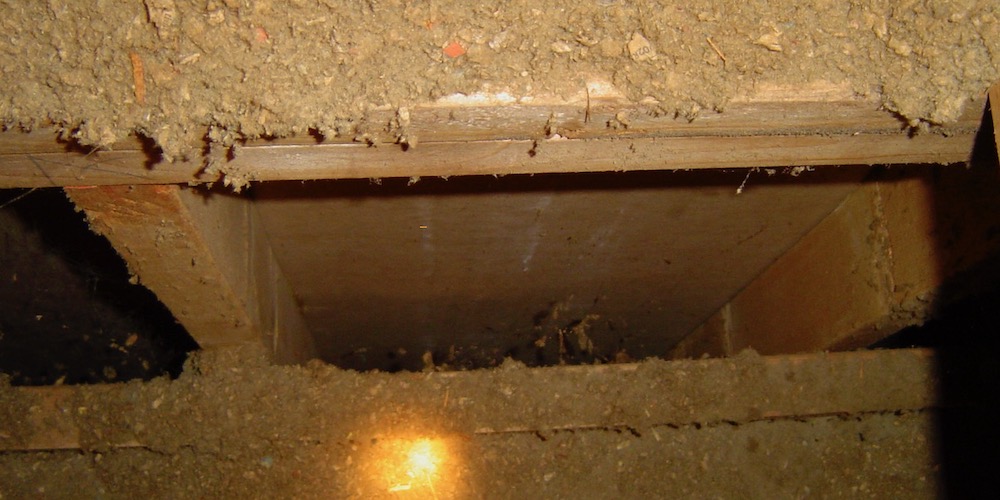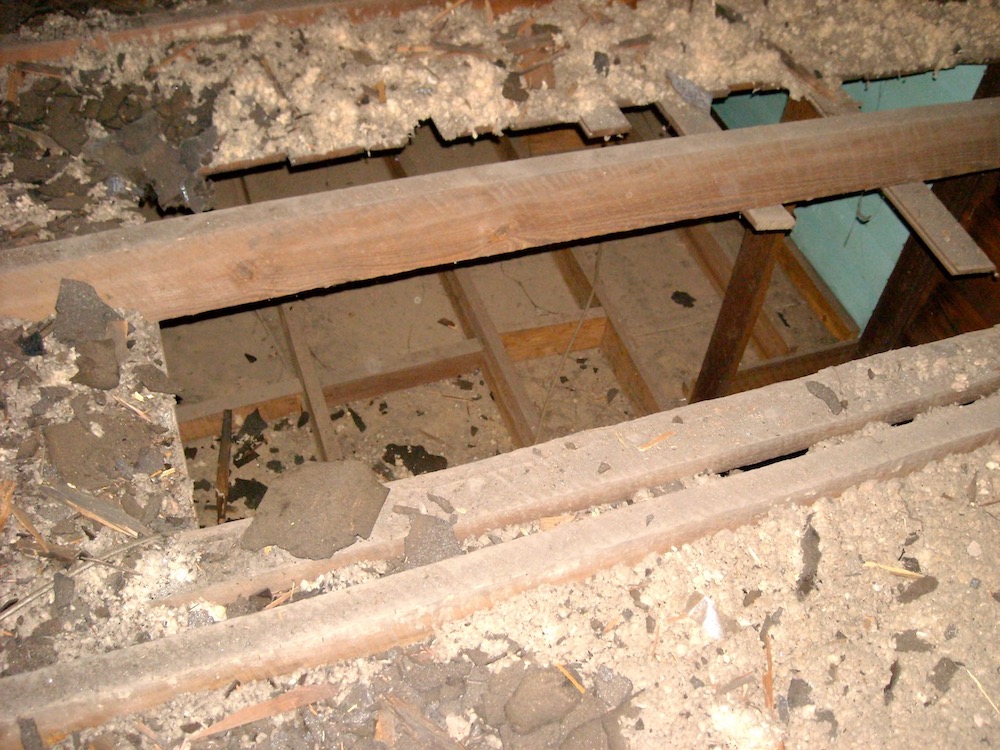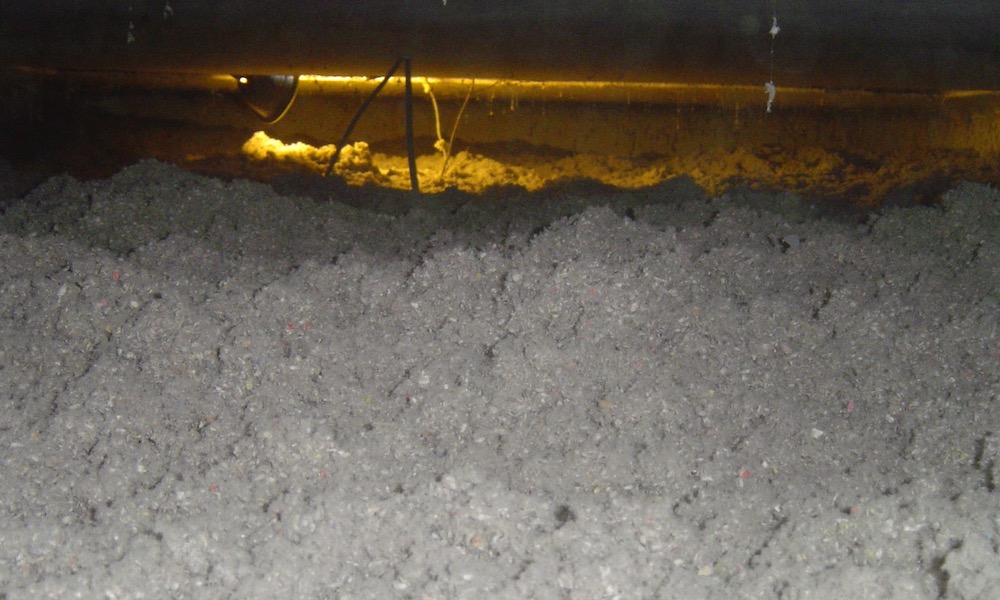Cold Interior Walls, Useless Insulation, and Building Science

It seems so simple. There’s outside, and there’s inside. The walls, ceilings, and floors that separate the cold outside from the warm inside should be the only surfaces that rob heat from your home. Interior walls have conditioned space on both sides, so they shouldn’t be a problem, right?
Wrong! I’ve seen and worked on several houses that lose heat through their interior walls, including the one I wrote about a few days ago in my article on hidden attic air leaks. They’re usually older houses that have been modified from the original, but I’ve seen these problems in new houses, too.
Cold interior walls
In such houses, the problem results from the top of the walls being open to the attic, as in the photo above. You can go into the attic and look down into the interior walls and see the drywall. That means that cold attic air gets down into those cavities.
With cold air inside the wall and warm air on each side in the house, heat moves through the drywall, which has a low R-value, and warms up the air in the cavity. The warm air then rises into the attic (a process called the stack effect). As that warmed air leaves the interior wall, cold attic air moves into the cavity to take its place, resulting in more heat loss. This process continues as long as the attic stays cold and the house is warm.
To fix the problem, you have to stop air from moving into or out of the interior wall cavities. One way to do this is to cover the opening with a rigid material and use caulk or spray foam to seal the edges. Another way is to stuff a piece of fiberglass insulation into the gap at the top of the wall and spray foam over it. That’s essentially what I did with that wall in the lead photo. It’s important to note that the fiberglass by itself is not sufficient because fiberglass does not stop air movement.
Double ceilings
Another problem I see in attics is insulation in the wrong place. Some old houses with high ceilings have had lower ceilings put in below the original ceiling. In that case, insulation on top of the original ceiling fails to keep the house warm. Again, it’s a matter of understanding where the attic air is going. These houses have two ceilings: the original ceiling and the current ceiling, which is lower.

The blown fiberglass insulation is almost always on top of the original ceiling because that’s the ceiling you see from the attic. In the course of modifying the houses, however, the workers opened many pathways for air to move from the attic to the space between the original ceiling and the current ceiling.
The result is that the air under the insulation (between the two ceilings) is at the same temperature as the attic air. That cold air is separated from the house only by a layer of drywall. As that air warms up from heat moving through the drywall, it moves through the openings into the attic and is replaced by more cold air. The insulation is useless because it’s in the wrong place!
The photo below shows another house that I fixed. It had the same problem with a lowered ceiling in one room. The photo shows the new cellulose insulation we blew into the gap between the original ceiling and the new lower one.

Earlier this year, I wrote about a house that a friend of mine was buying with an Energy Efficient Mortgage, and it had both of the problems I described here – cold walls and useless insulation.
If you want to understand politics, follow the money. If you want to understand heat loss in your home, follow the air.
Allison A. Bailes III, PhD is a speaker, writer, building science consultant, and the founder of Energy Vanguard in Decatur, Georgia. He has a doctorate in physics and writes the Energy Vanguard Blog. He is also writing a book on building science. You can follow him on Twitter at @EnergyVanguard.
Related Articles
How to Insulate a Short Attic Kneewall
4 Pitfalls of Spray Foam Insulation
Hidden Air Leakage Sites in Your Attic
NOTE: Comments are closed.
This Post Has 4 Comments
Comments are closed.

Thanks, Allison. As a home
Thanks, Allison. As a home inspector, I’ve seen all this and more. My favorite was when someone with bypasses in the walls under the kneewalls put batts in part of the roofline. Not only was it incomplete, the batts were falling down and out. Effectively, this attic has near zero insulation. It’s amazing what people do! It’s simple. Create and air barrier and put insulation against it!!!
Thanks much for describing
Thanks much for describing this issue. I expect to be looking for a house sometime in the next year, and this will give me another place to look for things that might need work.
I have this problem! thanks,
I have this problem! thanks, Im going to attack it tomorrow
this sounds exactly like what
this sounds exactly like what we have going on. In the winter the wall behind my couch becomes icey cold. what type of professional do I need to employ to fix this, and what is the cost?
Thanks for your article and in advance for your response.
Madison